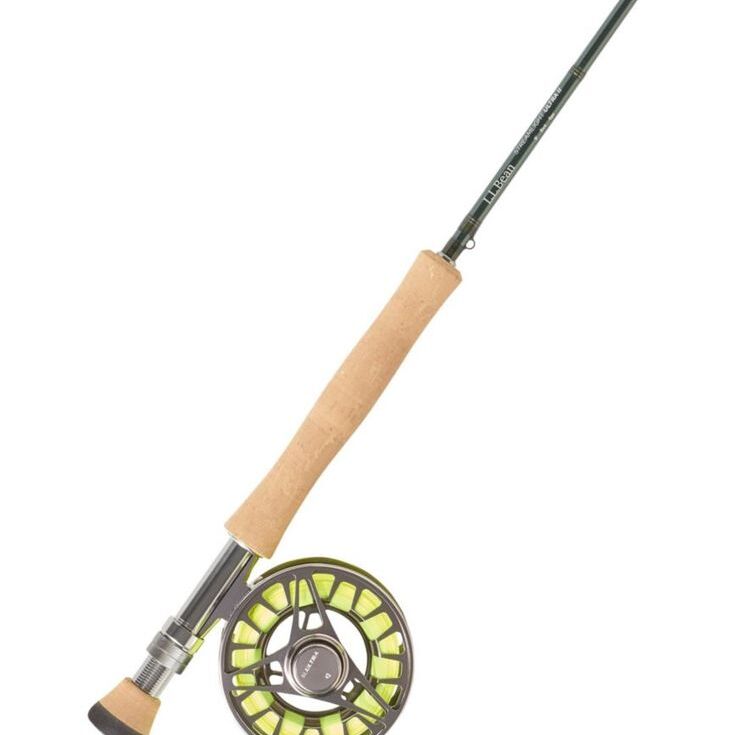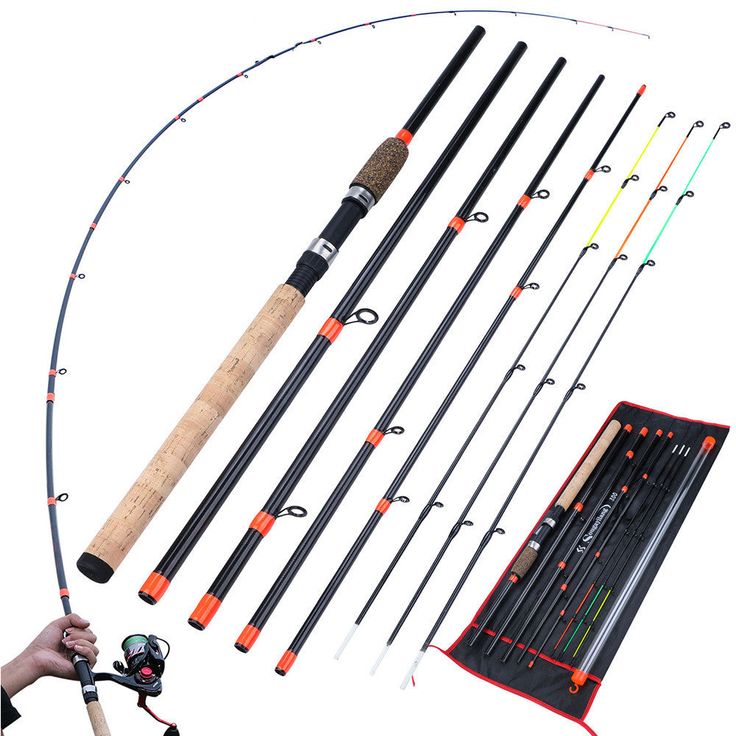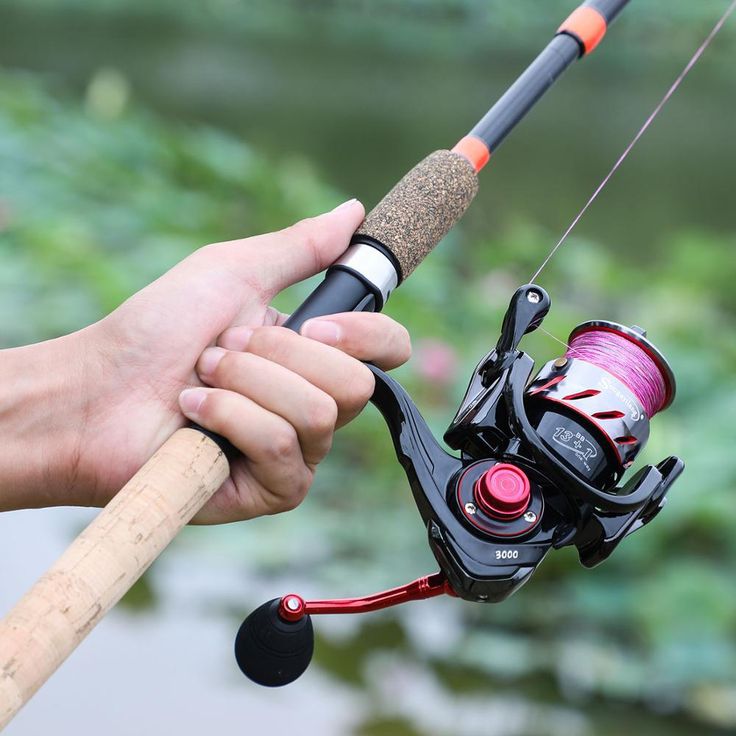Setting up a fly fishing rod might seem daunting for those new to the sport, but it’s an essential skill for any angler. By understanding how to set up a fly fishing rod properly, you’ll significantly enhance your fishing experience and increase your chances of catching fish. This guide will provide you with step-by-step instructions on how to set up a fly fishing rod effectively.

Selecting the Right Fly Fishing Rod
Selecting the right fly rod is essential for ensuring a successful day on the water. The rod you choose can significantly impact your casting efficiency, accuracy, and overall enjoyment of the fishing experience. It’s important to carefully consider the weight and length of the rod, as these factors should be tailored to the specific type of fishing you plan to do. Understanding these aspects is the first step towards a solid fishing setup that can enhance your chances of landing that perfect catch.
Understanding Rod Weight and Length
Rod weight and length are critical components that should be matched to the size of the fish you’re targeting and the type of water you’ll be fishing in. Generally, lighter rods are ideal for smaller fish and delicate presentations, while longer rods are suited for larger waters, providing better casting distance and control. Conversely, using a light rod in a river filled with large fish can lead to lost catches. Therefore, selecting the appropriate rod weight and length is crucial for a successful fishing outing.
The Importance of Rod Action for Beginners
Rod action, which refers to how the rod bends and recovers during casting, plays a significant role in how effectively you can fish. Beginners greatly benefit from using medium action rods, as they offer a balance of flexibility and strength, making them versatile and easier to control. This type of rod allows new anglers to learn the basics of casting without becoming overwhelmed. On the other hand, fast action rods, which are stiffer and provide a quick recovery, are especially advantageous in windy conditions, enabling more precise casts. Conversely, slow action rods bend more deeply and are best suited for small streams where a gentle presentation is required.
Choosing the Appropriate Fly Reel
Select the right reel to match your fly rod for balance and function. The reel’s weight should complement the weight of your rod to create a balanced feel.
Matching Reel Weight to Rod
Ensure the reel weight aligns with your rod’s weight. A well-matched pair improves casting and handling. This helps avoid fatigue and increases your control over the line.
Arbor Size and Its Benefits
Choose a large arbor reel for quicker line retrieval. A large arbor also reduces line memory, helping your line lay flat for better casting and less tangling.
Types of Drag Systems
Pick a reel with a reliable drag system. A disc drag offers more control for fighting larger fish. Click and pawl systems work well for smaller fish and are simple to use.

Fly Line Essentials
Choosing the correct fly line is crucial and can have a major impact on your casting success.
Types of Fly Fishing Lines: Floating, Intermediate, and Sinking
Your choice of fly line will largely depend on where the fish are feeding. Floating lines are best for surface flies, intermediate lines for mid-water, and sinking lines if you want to go deep.
The Significance of Weight-Forward Lines
Weight-forward lines have most of their mass at the front, making them ideal for beginners. These lines make casting easier and help to feel the rod load during a backcast.
Why Quality Fly Line Matters
Don’t skimp on the fly line. A good quality line will improve your casting, reduce tangling, and ensure your fly presents properly. It’s worth the investment.
Assembling the Fly Rod
Assembling your fly fishing rod correctly sets the stage for a productive fishing experience. Careful, methodical setup is key to ensuring your equipment performs to its potential on the water.
Attaching the Reel to the Rod
Start by attaching your reel to the rod. Confirm that the reel’s weight matches that of the rod for a balanced setup. Hold the rod handle firmly and align the reel foot with the rod’s reel seat, then secure it in place with the locking rings.
Threading Line through the Rod Guides
Next, thread your fly line through the guides. Begin from the tip, making a loop in the line to keep it from slipping, and work your way down to the reel. Maintain tension to avoid snags and ensure smooth reeling during fishing.
Securing Line to the Reel
Finally, secure the line to your reel. Depending on your setup, you may use an arbor knot for direct attachment or a loop-to-loop connection if your line has a welded loop. Be sure to tie your knots tightly for a secure connection that withstands the pull of a catch.
Attaching the Leader and Tippet
Connecting the leader and tippet correctly is essential for achieving a seamless fly fishing experience. Ensuring a secure and efficient connection helps prevent line breakage and enhances the overall effectiveness of your cast, allowing you to focus on the thrill of the catch rather than worrying about your gear.
Using Tapered Leaders for Better Turnover
Tapered leaders are designed to improve your casting accuracy and enhance turnover. The narrow end of the tapered leader attaches to the tippet, allowing for smoother transitions and a more delicate presentation. This design is particularly beneficial in tricky conditions, where precise placement can make all the difference in enticing fish.
The Role of Tippet Material
The tippet material serves as a vital link between your fly and leader, allowing for effective movement and presentation in the water. High-quality tippet material ensures that your flies mimic natural behavior, encouraging fish to strike. The right tippet choice can enhance your success rate on the water.
Connecting Flies with the Clinch Knot
To securely attach flies to your tippet, the clinch knot is an ideal choice. This strong and reliable knot keeps your flies securely in place during both casting and striking, ensuring that they remain attached when you need them most. Mastering this knot can significantly enhance your confidence and efficiency in fly fishing.
Setting Up Multiple Flies
Setting up multiple flies can be an incredibly effective fishing technique, especially when you seek to target fish at various depths. To achieve this, utilize droppers to allow your bait to present at different levels in the water.
The art of adding droppers begins with a long leader line. From this main line, tie on shorter lengths of tippet for each fly you intend to fish with. A reliable blood knot is ideal for attaching each dropper securely, and it’s crucial to ensure that your droppers are spaced evenly along the leader.
Minimizing tangles while using multiple flies is essential for an enjoyable fishing experience. Tangles can be troublesome and frustrating. To reduce this risk, focus on employing proper casting techniques. Utilize a wider casting loop and practice different casting methods, such as the Oval Cast, to maintain control. With patience and careful practice, you can fish with multiple flies without frequently encountering tangles, enhancing your overall fishing success.
Fishing Knots to Know
Learning the correct knots is essential for a successful fly fishing setup, as they ensure your flies remain secure and effective in catching fish. Mastering these knots will greatly enhance your fishing experience and improve your chances of landing that prized catch.
The Improved Clinch Knot is particularly strong and easy to learn, making it an excellent choice for tying flies to tippets and ensuring a solid connection.
The Nail Knot is another crucial knot that serves to connect fly lines to leaders, a fundamental skill every fly angler should possess.
Lastly, the Davy Knot is quick and simple to execute, making it ideal for attaching small flies to fine tippets, especially in situations requiring precision. By mastering these essential knots, you will be well on your way to becoming a proficient fly angler.
Finalizing Your Setup
After you’ve successfully assembled your rod and attached the reel and line, it’s time to finalize your setup properly to ensure optimal performance while fishing. A well-finished setup not only enhances your experience on the water but also contributes significantly to your success in catching fish.
Checking Rod Balance
First, focus on the balance of the rod. Hold it comfortably in your hand, and check that it feels evenly distributed. A balanced rod allows for better control and accuracy when casting, reducing fatigue over time. If the rod feels awkward or heavy on one side, you may need to make adjustments to the reel or line to achieve a better balance.
Final Inspection for Alignment and Security
Next, conduct a thorough final inspection of your setup. Carefully check all your knots to ensure they are securely tied and haven’t weakened. It’s also essential to confirm that the line flows straight through the guides without any twists or snags. This alignment ensures smooth casting and retrieval, and it is crucial to ensure that all components of your setup are tightly secured.
Tips for Maintaining Your Fly Rod Setup
Finally, to keep your fly rod setup in top condition, make it a habit to regularly clean your gear after each fishing trip. Pay attention to removing dirt, salt, and debris that can accumulate on your rod and reel. Additionally, storing your equipment in a dry place will help prevent rust and prolong its lifespan. Taking these maintenance steps ensures that your setup remains reliable and ready for your next fishing adventure.
